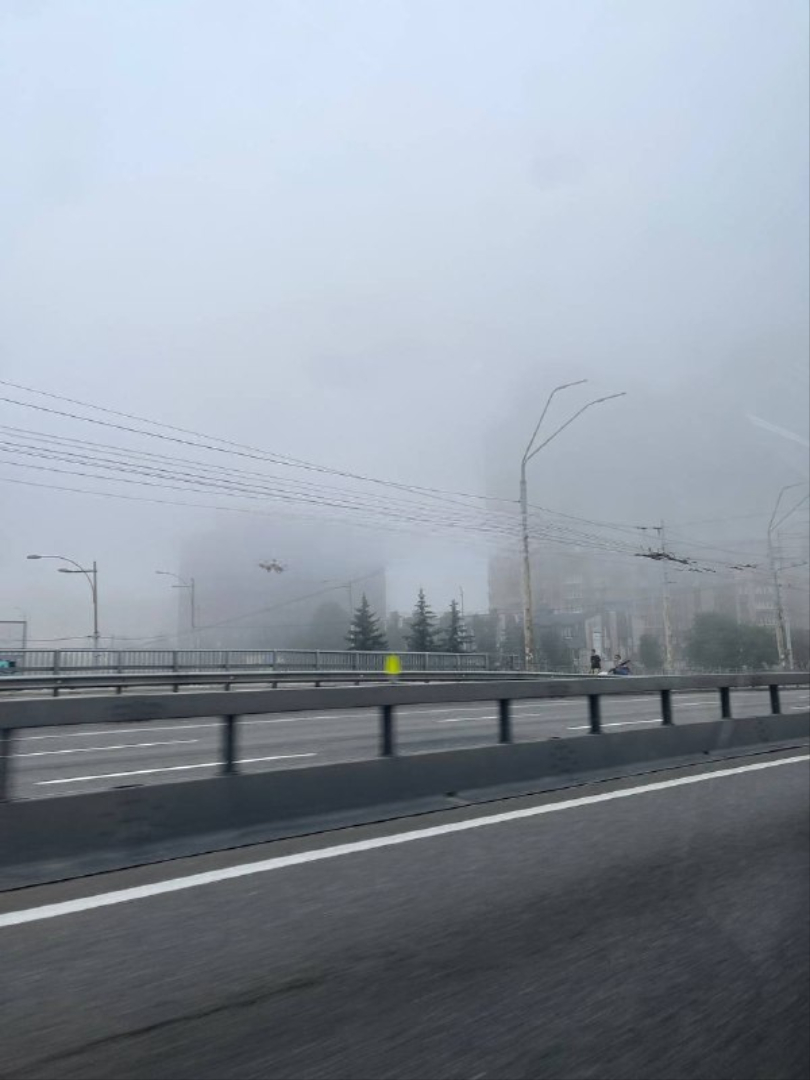On July 4, 2025, a large-scale Russian aerial assault triggered destructive fires across Kyiv, leading to dangerously high levels of air pollution and a major public health emergency. With an AQI of 156, Kyiv became one of the world's most polluted cities, prompting urgent health advisories and raising global concern over the environmental impact of the war.
Kyiv Air Pollution Crisis After Massive Russian Airstrike: Fires Ignite Environmental Catastrophe


Kyiv Chokes Under Toxic Air After Massive Russian Airstrike Sparks Fires
KYIV, UKRAINE — July 4, 2025 A devastating overnight Russian air assault has plunged Ukraine’s capital into an environmental crisis, with air pollution levels soaring to hazardous extremes. The attack, one of the largest in recent months, ignited widespread fires that blanketed Kyiv in thick, toxic smoke—prompting health warnings and global concern.
Unprecedented Assault Leaves Kyiv Reeling
Russian forces launched 550 aerial weapons—a mix of drones and missiles—targeting key infrastructure across Ukraine. Despite Ukraine’s air defense intercepting 478 threats, several penetrated the capital’s defenses, causing:
Fires in residential and industrial zones
Damage to railway systems, disrupting transit
23 injuries, with 14 hospitalized
The resulting blazes released a dangerous mix of pollutants, triggering an air quality emergency.
Kyiv’s Air Quality Plummets to Global Lows
By morning, Kyiv ranked as the second most polluted city in the world, with an Air Quality Index (AQI) of 156—a level deemed “unhealthy” by global standards.
Pollutants detected include:
| Pollutant | Health Impact |
|---|---|
| Nitrogen Oxide | Respiratory irritation |
| Sulfur Dioxide | Lung inflammation |
| Carbon Monoxide | Reduced oxygen delivery to organs |
| Ground-Level Ozone | Breathing difficulties, chest pain |
Visibility dropped sharply as a dense haze settled over the city, prompting widespread concern.
Health Alerts Issued as Hospitals See Spike in Cases
Ukraine’s Ministry of Health urged residents to:
Stay indoors and seal windows
Use air purifiers and stay hydrated
Avoid strenuous outdoor activity
Hospitals reported a surge in patients with respiratory distress, headaches, and fatigue. While radiation levels remained normal, the air itself became a silent threat.
Environmental Fallout Raises Global Alarm
Experts warn that repeated attacks causing fires and industrial damage could lead to long-term ecological degradation.
???? Greenhouse Gas Surge: Fires have significantly increased Ukraine’s carbon emissions.
???? International Condemnation: Environmental groups call for accountability over wartime ecological harm.
The assault highlights how modern warfare extends beyond physical destruction—into the air, soil, and water.
Government Response and Recovery Efforts
Ukrainian officials are mobilizing emergency services and environmental monitors to assess damage and restore safety.
Real-time air quality tracking continues
Calls for international aid and environmental support grow louder
Public sentiment remains defiant, with many residents vowing resilience
Voices from Kyiv: “We’re Breathing the War”
Social media lit up with haunting images and firsthand accounts:
“The air smells like burning metal and fear,” wrote one resident. “We’ve survived missiles—but this feels like a slow, invisible attack.”
Conclusion: Kyiv’s Fight for Breath and Freedom
As Kyiv battles both military aggression and environmental fallout, its people remain steadfast. The latest attack underscores the hidden costs of war—where even the air becomes a battleground.

 বাংলা
বাংলা  Spanish
Spanish  Arabic
Arabic  French
French  Chinese
Chinese 



